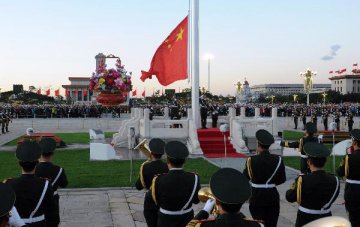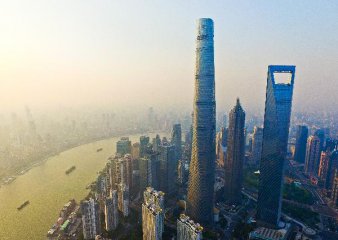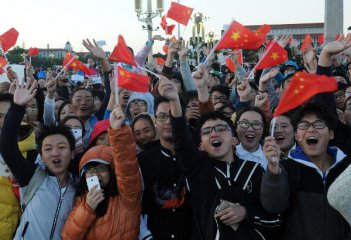
Leaders of the Communist Party of China (CPC) met in Beijing on Monday to discuss an economic blueprint that will set the direction and the pace for the world's second largest economy over the next five years.
The fifth plenary session of the 18th CPC Central Committee will review proposals for a new five-year plan of the country's national economic and social development from 2016-2020.
After taking into accounts the proposals, a final plan will be ratified by the annual session of China's top legislature in March next year. The CPC Central Committee Political Bureau will also report its work to the Central Committee during this week's meeting.
The CPC has regularly offered suggestions for China's economic and social development plans since the early years of the people's republic to offer guidelines on its growth. This week's four-day meeting comes at a time when the world economic powerhouse entered a "new normal" state of slower growth.
China's economy expanded 6.9 percent in the third quarter of 2015, the first time the quarterly growth rate has dropped below 7 percent since the second quarter of 2009, the height of global recession.
Other poor figures added to the disappointment. Industrial production was lower than expected, with September growth at a six-month low. Fixed-asset investment continued to slow and power use was also weak.
With China in a period of transformation, the new five-year plan, the 13th, has been garnering increased attention from observers both home and abroad. So far, few details of the new program, the first of its kind under the leadership of Chinese President Xi Jinping, has been made available to the general public, although authorities said they have previously solicited public opinions on the new plan in a limited scope.
In a trip to south China's Guangxi Zhuang Autonomous Region last month, vice premier Zhang Gaoli said China will seek to maintain "medium-high speed growth" and improve its economic growth quality. Like in previous five-year plans, a GDP growth target is likely to be included.
Market estimates that the growth target for 2016-2020 will be put between 6.5 and 7 percent. Xin Ming, a professor from Party School of the CPC Central Committee, said setting a growth range rather than a definitive number will give the leadership more leeway to steer the economy towards structural reform.
China is aiming to double its 2010 GDP and people's income by 2020. A growth rate of around 7 percent would keep China on track to meet that goal. Xin said if the Chinese economy can truly bring about structural reform in the next several years, even a 6.5 percent GDP growth, a worst-case scenario, is acceptable.
"A restructured economy will also have less pressure on the environment," added Xin. Previously, the 12th five-year-plan (2011-2015) set an average annual growth target of around 7 percent.
The National Bureau of Statistics estimated earlier this month that China's annual economic growth will be just a little less than 8 percent during the 12th five-year plan period.
Between 2011 and 2014, the economy expanded by an annual rate of 8 percent, the bureau said. The country's growth during this period contributed to more than 25 percent of total world economic growth. In an earlier statement issued this month, the Political Bureau said the Chinese people made "major progress" in development during the 12th five-year plan period.
It said the new economic program for 2016-2020 is "crucial to China's goal of building a moderately prosperous society in all respects by the centennial anniversary of the founding of the CPC."
Analysts say the 13th Five-Year Plan, in the face of the new normal, must underpin development as top priority and continue to carry out the "Four Comprehensives" strategy: comprehensively building a moderately prosperous society, comprehensively deepening reform, comprehensively implementing rule of law, and comprehensively strengthening Party discipline.
Ma Guangyuan, a Beijing-based economist, said the meeting may discuss further measures to stabilize the economy. "Maintaining growth is not a problem for China because fundamentals of the Chinese economy have not changed." But rather than just setting a GDP growth target, China needs to think more about how to find new economic growth engines, said Ma.
"Growth targets in the five-year plan can only provide guidance, but should not become a shackle to economic and reform measures." "After all, it is difficult to accomplish many tasks, for instance, building an innovation-driven economy, in only five years," said Ma.
Ma also said that efforts should be made to solve old problems such as transition to a consumer-driven economy, lagging fiscal and tax reform, measures to prevent financial risks, environmental protection and letting the people have a larger share of economic growth results.
Meanwhile, Sean Miner, a researcher at the Petersen Institute for International Economics, said the 13th five-year-plan should also focus on enterprise reform, with more transparency and getting away from preferential treatment for state-owned enterprises, while shrugging off undue concern over the world's second largest economy.
"China's growth rate is slowing down, but in relative terms, it's still growing much faster than most industrial countries," he said.
























Latest comments